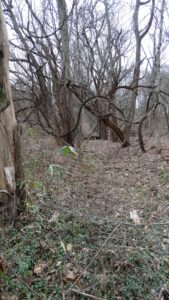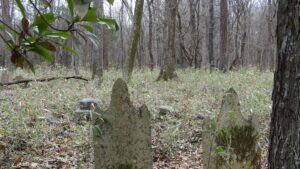I love history, and one of the best ways to learn more about it is to talk to someone who experienced it. Their first-hand accounts often add details, absent in historical texts.
The Wish
In her early nineties, my paternal grandmother wished to see her paternal grandparents’ graves one last time. That was one cemetery we’d never visited in all our annual trips to Tennessee. Other than the day her grandfather was buried, she had only been to that cemetery a handful of times, and all long before my birth.
Visiting their last resting place wasn’t as easy as you’d expect. The cemetery, which had originally held almost 450 graves, had been forgotten over time, cut off by a dam built in the late 1960s and the lake it created. The road which passed the cemetery had been moved, and ninety graves had been relocated to other cemeteries. Not that we knew this when we began our hunt.
For several years after she voiced her wish, our visits to Tennessee included a day or two when the two of us would sneak off to research and search. We traveled to every cemetery anyone mentioned—large or small, private or public—before we connected with the right person and discovered where it was and why it had “disappeared.”
The Road
Back then, the cemetery and the land surrounding it were part of either the state’s Wildlife Resource Agency or a University of Tennessee wildlife project, I can’t remember which. We parked in front of the portable building they used as an office and were pointed to a gap in the trees just past the building. We had to walk the final half mile to the cemetery.
That information didn’t deter my ninety-eight-year-old grandmother. She forged ahead as if walking on a well-cared-for park trail, rather than what remained of the original single-lane dirt road, now overgrown, rutted, and littered with broken tree limbs. On both sides, rusted wire fences fought valiantly to remain upright, continuing to provide a barrier between the road and the woods, which had been open pastures when the fences were erected.
As the last leg of our journey began, Grandmother shared her memories of that long-ago day when they buried her grandfather. I “saw” it all. The horse-drawn hearse in front of us. The cattle grazing in the pastures on either side of the single, tree-lined road. It was like we’d stepped into a time machine and been transported back eighty years to mid-May 1907. She had walked this road then, too, following the hearse, and now I was walking it with her.
The Past Rediscovered
More than thirty years passed before I returned to that cemetery with my parents. We found my great-grandparents’ young daughters’ graves, but not the grave of my great-grandparents. I accomplished that the next year with the help of a neighbor and her three sons. With a little prodding of the ground—and study of the cemetery map my grandmother and I had been given—we discovered their large headstone buried under several inches of dirt and leaves. We also found the headstone of a third child, a young girl, they’d lost. It, too, had fallen, but we set it up and braced it against its base.
During the years since my first visit, things changed. The cemetery and the land around it are now part of the local Air Base, and getting on the base can be tricky. (You don’t just drive onto a military base, especially if they’re having live fire exercises.) On the plus side, the cemetery being on the base adds a layer of protection from vandals. Unfortunately, the base doesn’t provide any upkeep. (To be fair, by the time they took it over, the cemetery had already fallen into major disrepair.)
Sadly, nature is quickly reclaiming the cemetery, but at least I have my grandmother’s account of the day they buried her grandfather. The details she provided added texture to a 1907 burial and gave me a more complete picture of the experience.
Did You Know…
- Gravestones should not be cleaned on very hot or very cold days.
- Cleaning headstones should only be done with clean water. Do not use cleaning solutions, even those claiming to be biodegradable and/or all-natural/organic. (For more information, click here.)
- Tools for cleaning gravestone include soft wooden objects like popsicle sticks or kitchen spatulas, plastic scrappers, natural or “sea” sponges (no cheap colored sponges), and toothbrushes or other soft, bristled brushes made with uncolored nylon or natural fibers. Never use metal.
- The gravestone’s surface should always be kept wet. Avoid dry-to-dry surface contact.
- Gravestone rubbing is now recognized as dangerous to the gravestone and is illegal in many states.
- Using products like flour to read the words inscribed is also harmful to gravestones.
- A good digital camera on a sunny day is the safest way to read what is written on a headstone.

Between the trees is what remains of the road approaching the cemetery in 2023.

Cemetery 2023


What a great memory with her!
She was so sweet and so very tiny.
We loved “Grandma Unkel”
The best part of the whole thing was those times when Grandmother and I “escaped” to explore the countryside. Poor Dad wasn’t so lucky. Lol
Very interesting! I’m glad we were able to visit the cemetery as well.
I did not know flour was harmful to the gravestones. I’ll have to share that information with the sisters before we make any more trips.
Yes, I’m glad I was able to visit it again with y’all.
Flour being harmful was news to me, too.